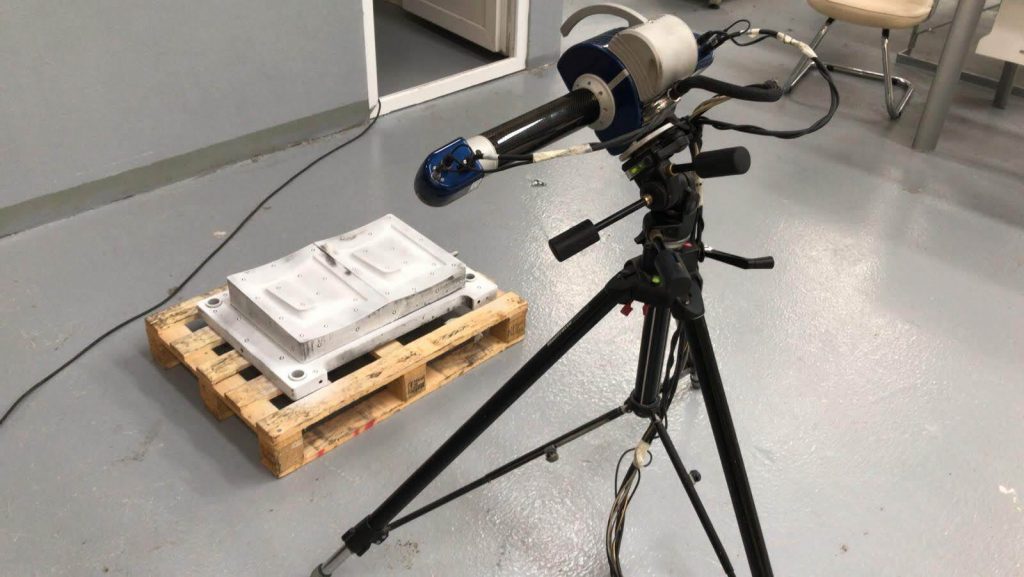Reverse Engineering
What is Reverse Engineering?
Reverse Engineering is a term for the exact reproduction of a master model following the detailed examination of its construction. It is practised in various industries and is traditionally used to analyze another company’s product for benchmarking.
In the manufacturing industry, the process starts with generating CAD data of an object using digitalization systems. The collected data can be used to digitally display the object’s surface to fully understand the item and potentially enhance its effectiveness.



How to do Reverse Engineering?
The process of Reverse Engineering starts with generating CAD data of an object with stationary scanning devices. Our professional scanning systems collect polygon data by taking multiple scans to create cross-sections with reverse engineering software. Before creating a CAD Model, the resulting Point Cloud (STL Data) will be used for Feature Extraction, Segmentation and Surface Fitting. After applying the CAD Tool, the manufacturing process can finalize the first sketches by creating solid samples or surfaces. The model data can be exported into CAD/CAE/CAM systems using standard formats such as IGES, VDA, STL and STEP.
Parametric Modeling Enhances Reverse Engineering
Parametric Modeling is based on an actual project with its CAD data. It displays the model’s features and uses surface modelling design tools to differentiate the object’s attributes. Parametric Modeling allows the 3D designer to define entire classes of shapes rather than specific instances. Therefore, parametric models simplify shape modification as a whole. With this practice, product design engineering is being revolutionized.
Editing 3D Scans in Reverse Engineering
The digital edition of an object’s CAD data can be draft-based or use quick-surface modelling tools. Changes in the draft’s data reflect the scan’s design, resulting in an object with a different shape.
Quick Surface Modeling is based on high-tech 3D modelling software. The editing is done on the scan’s data, and then the program automatically creates a surface on the polygon data.
Our experienced engineers are familiar with the most common methods. Let us know about your specifications, and we will recommend the most appropriate way according to your part’s geometry, precision, cost, and application.
Areas of Application
● Modelling of parts without CAD Data (sometimes parts are imported without the CAD data (or the data is lost) and are needed to be reproduced)
● Modelling of master models for moulding practices (For the creation of moulds for different techniques, the required master model needs to be produced)
● Need to create data for the recreation of deformed parts or moulds (broken parts without CAD data are needed to be reproduced)
● Any handmade product (such as clay, wood, styrofoam, etc.) that needs to be transformed into an industrial design can produce CAD Data through reverse engineering
● Since Reverse Engineering, the creation of replications of objects that have a cultural legacy
● Industrial modelling parts (clay modelling, model production, etc.)
● Revised parts after the mass production (Optimization of the first production line)
● Special manufacturing or editing for individual clients
● Quality control through sampling after mass production
● Control of trim lines in steel parts (an essential part of quality control)
● Control of finishing allowance in cast iron parts
● Examination of competing products

Advantages of Reverse Engineering
- Reverse Engineering and reproducing can be cheaper than re-importing
- Understanding existing design and manufacturing techniques
- Improving competitor’s product without starting from scratch
- Track down any existing product vulnerabilities
Critical Factors While Processing Reverse Engineering
- A professional 3D scanner is a must-have
- Experienced engineer using the scanner due to high complexity
- The operating engineer needs to have good listening and communication skills to understand the customer’s needs fully
- Detailed specifications (material, size, technical properties, etc.)

